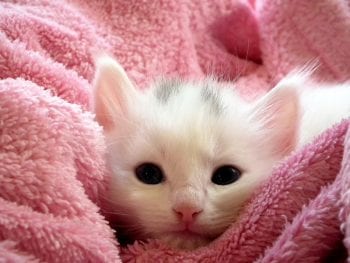Toward the end of my first year at university, a friend of mine stumbled upon a funny online student-made list of “things NOT to expect at vet school”. From memory, I think it included things we all related to such as Christmas holidays (curse you, exams), summer holidays (why, EMS, why?) and “a coolness status to rival the medics” (we are real doctors, I swear).
But what was probably the most relatable, and yet the one nobody really expects before vet school without already being in the know, is: “an abundance of men”.
Now, I’m not saying I signed up to the course for the sole purpose of a live action performance of It’s Raining Men, but, at the same time, you can’t help but be taken aback by the sheer volume of girls compared to guys the first time you walk into that lecture theatre.

Why, oh why?
Just to put it into perspective for you, my cohort for the year is roughly 150 students and 10% of those students are male.
According to gender statistics recorded by the Vet Futures project, it’s been like that for some time, in fact, the veterinary graduates’ ratio of female to male has only been increasing over the past few decades.
Nobody is really sure why. In human medicine the ratio is relatively even, so what is it about animals that strikes a chord with women more than men?
- A maternal nature?
- A love for all things fluffy?
Both these solutions seem a little stereotypical and, to be honest, we’re probably most unsure about the reason behind the numbers because nobody wants to touch this landmine of a topic with a 10-foot barge pole.
I really don’t have the answers myself, either – but it’s a curiosity I can’t not address.
Imbalance
I suppose I never noticed it growing up, or even doing work experience prior to vet school – which makes sense when you look again at the statistics as the gender gap seems to rein in after graduation. So, although around 70% of vet graduates are female, the number of practising female vets is more like 50%.
That difference doesn’t seem so odd once you’ve factored in maternity leave, but it’s not the only disparity. Despite the fact the veterinary population spewing out of universities across the country each year is overwhelmingly female, men make up the majority of those working as RCVS specialists, as farm/mixed practice vets and as RCVS fellows – the people committed to advancing the veterinary profession.
In essence, the vets who specialise outside of “general practice” are confusingly male. Positions of power in general practice, such as partner positions, are also held by men in a greater proportion than women.
How can this be?
As a veterinary student with, as yet, only a teeny tiny foot in the clinical world, I can only really speculate.
The best-case scenario for these statistics would be simple chance, that more men happen to have been interested in specialised careers than women, but this seems unlikely. It could also be down to the fact that maternity leave and childcare can unfortunately, but ultimately, lead to a lack of “career propulsion” (for lack of a better term), and can make it a little harder to advance in your profession at the same rate as male peers. More woman might choose job stability over returning to education or pursuing a less predictable career for the same reason.
These outcomes are understandable, but at the same time, nobody should be – or feel as if they are being – held back.
It’s my hope that, in future years, the gap between the genders closes, for more guys to aspire to a veterinary career, and for more practising female veterinary surgeons to pursue whatever career they chose, general or specialised.

Leave a Reply